A Theoretical Concept of Decoupled Current Control Scheme for Grid-Connected Inverter with L-C-L Filter
Abstract
:1. Introduction
1.1. Damping the Resonant Modes
1.2. Decoupling of Active and Reactive Powers
- the decoupling of active and reactive current channels and corresponding independent control of active and reactive powers;
- effective damping of resonant modes caused by an LCL-filter;
- using the minimum number of sensors, leading to cost reduction and improved system reliability;
- developing a parameter-tuning approach for the studied MIMO system using well-known criteria of phase and gain margin;
- consideration of computational and PWM delays in the control loop and controller parameters tuning.
2. Modeling of Grid Connected Inverter with LCL Filter
- is zero because the PCC voltage is used as PLL input;
- the resistances of the filters are negligible, which represents the worst possible case of stability,
- the is negligible knowing its small amplitude and zero average value.
3. Proposed Non-Linear Current Control Scheme of Grid Connected Inverter with LCL Filter
3.1. Output Current Control
3.1.1. Proposed Active Current Control
3.1.2. Proposed Reactive Current Control
3.2. DC-Link Voltage Controller
3.3. Reactive Power Controllers
3.4. Proposed Observer for Estimation of State Variables of the LCL Filter
4. Proposed Procedure for Tuning the Proposed Controller
4.1. Proposed Scheme for Phase Margin Determination
4.2. Proposed Approach for Controller Parameters Tuning
5. Case Study and Simulation Results
- 1.
- at t = 0.1 s, steps up to 20 kVar;
- 2.
- at t = 0.2 s, steps up to 25 kW;
- 3.
- at t = 0.3 s, steps up to 1050 V;
- 4.
- at t = 0.4 s, steps down to 1000 V.
5.1. Converter Is Connected to an Ideal Grid (Zero Impedance)
5.2. Converter Is connected to a Non-Ideal Grid (Non-Zero Impedance)
5.3. Converter Is Connected to a Non-Ideal Grid (Non-Zero Impedance) Considering Uncertainties in the Filter Impedances
6. Conclusions
Author Contributions
Funding
Institutional Review Board Statement
Informed Consent Statement
Data Availability Statement
Conflicts of Interest
References
- Zarei, S.F.; Ghasemi, M.A.; Mokhtari, H.; Blaabjerg, F. Performance Improvement of AC-DC Power Converters under Un-balanced Conditions. Scientia Iranica 2019. [Google Scholar] [CrossRef] [Green Version]
- Beres, R.N.; Wang, X.; Liserre, M.; Blaabjerg, F.; Bak, C.L. A Review of Passive Power Filters for Three-Phase Grid-Connected Voltage-Source Converters. IEEE J. Emerg. Sel. Top. Power Electron. 2016, 4, 54–69. [Google Scholar] [CrossRef] [Green Version]
- Sanatkar-Chayjani, M.; Monfared, M. Stability Analysis and Robust Design of LCL With Multituned Traps Filter for Grid-Connected Converters. IEEE Trans. Ind. Electron. 2016, 63, 6823–6834. [Google Scholar] [CrossRef]
- Khajehoddin, S.A.; Karimi-Ghartemani, M.; Jain, P.K.; Bakhshai, A. A Control Design Approach for Three-Phase Grid-Connected Renewable Energy Resources. IEEE Trans. Sustain. Energy 2011, 2, 423–432. [Google Scholar] [CrossRef]
- Xu, J.; Xie, S. LCL-resonance damping strategies for grid-connected inverters with LCL filters: A comprehensive review. J. Mod. Power Syst. Clean Energy 2017, 6, 292–305. [Google Scholar] [CrossRef] [Green Version]
- Yao, W.; Yang, Y.; Zhang, X.; Blaabjerg, F.; Loh, P.C. Design and Analysis of Robust Active Damping for LCL Filters Using Digital Notch Filters. IEEE Trans. Power Electron. 2017, 32, 2360–2375. [Google Scholar] [CrossRef] [Green Version]
- Pena-Alzola, R.; Liserre, M.; Blaabjerg, F.; Ordonez, M.; Kerekes, T. A Self-commissioning Notch Filter for Active Damping in a Three-Phase LCL -Filter-Based Grid-Tie Converter. IEEE Trans. Power Electron. 2014, 29, 6754–6761. [Google Scholar] [CrossRef] [Green Version]
- Ciobotaru, M.; Rossé, A.; Bede, L.; Karanayil, B.; Agelidis, V.G. Adaptive Notch filter based active damping for power con-verters using LCL filters. In Proceedings of the 7th International Symposium on Power Electronics for Distributed Generation Systems (PEDG), Vancouver, BC, Canada, 27–30 June 2016; pp. 1–7. [Google Scholar]
- Mahlooji, M.H.; Mohammadi, H.R.; Rahimi, M. A review on modeling and control of grid-connected photovoltaic inverters with LCL filter. Renew. Sustain. Energy Rev. 2018, 81, 563–578. [Google Scholar] [CrossRef]
- Midtsund, T. Control of Power Electronic Converters in Distributed Power Generation Systems: Evaluation of Current Control Structures for Voltage Source Converters operating under Weak Grid Conditions. In Proceedings of the 2nd International Symposium on Power Elec-tronics for Distributed Generation Systems, Hefei, China, 16–18 June 2010; pp. 382–388. [Google Scholar]
- Bao, C.; Ruan, X.; Wang, X.; Li, W.; Pan, D.; Weng, K. Step-by-Step Controller Design for LCL-Type Grid-Connected Inverter with Capacitor–Current-Feedback Active-Damping. IEEE Trans. Power Electron. 2014, 29, 1239–1253. [Google Scholar] [CrossRef]
- Pan, D.; Ruan, X.; Bao, C.; Li, W.; Wang, X. Capacitor-Current-Feedback Active Damping With Reduced Computation Delay for Improving Robustness of LCL-Type Grid-Connected Inverter. IEEE Trans. Power Electron. 2014, 29, 3414–3427. [Google Scholar] [CrossRef]
- Xia, W.; Kang, J. Stability of LCL-filtered grid-connected inverters with capacitor current feedback active damping considering controller time delays. J. Mod. Power Syst. Clean Energy 2017, 5, 584–598. [Google Scholar] [CrossRef] [Green Version]
- Komurcugil, H.; Altin, N.; Ozdemir, S.; Sefa, I. Lyapunov-Function and Proportional-Resonant-Based Control Strategy for Single-Phase Grid-Connected VSI With LCL Filter. IEEE Trans. Ind. Electron. 2016, 63, 2838–2849. [Google Scholar] [CrossRef]
- Xu, A.J.; Xie, B.S.; Kan, C.J.; Ji, D.L. An improved inverter-side current feedback control for grid-connected inverters with LCL filters. In Proceedings of the 2015 9th International Conference on Power Electronics and ECCE Asia (ICPE-ECCE Asia), Seoul, Korea, 1–5 June 2015; pp. 984–989. [Google Scholar]
- Judewicz, M.G.; Gonzalez, S.A.; Fischer, J.R.; Martinez, J.F.; Carrica, D.O. Inverter-Side Current Control of Grid-Connected Voltage Source Inverters WITH LCL Filter Based on Generalized Predictive Control. IEEE J. Emerg. Sel. Top. Power Electron. 2018, 6, 1732–1743. [Google Scholar] [CrossRef] [Green Version]
- Maccari, L.A.; Massing, J.R.; Schuch, L.; Rech, C.; Pinheiro, H.; Oliveira, R.; Montagner, V.F. LMI-Based Control for Grid-Connected Converters With LCL Filters Under Uncertain Parameters. IEEE Trans. Power Electron. 2014, 29, 3776–3785. [Google Scholar] [CrossRef]
- Hao, X.; Yang, X.; Liu, T.; Huang, L.; Chen, W. A Sliding-Mode Controller With Multiresonant Sliding Surface for Single-Phase Grid-Connected VSI With an LCL Filter. IEEE Trans. Power Electron. 2012, 28, 2259–2268. [Google Scholar] [CrossRef]
- Nϕrgaard, J.B.; Graungaard, M.K.; Dragičević, T.; Blaabjerg, F. Current Control of LCL-Filtered Grid-Connected VSC Using Model Predictive Control with Inherent Damping. In Proceedings of the 20th European Conference on Power Electronics and Applications (EPE’18 ECCE Europe), Riga, Latvia, 17–21 September 2018; pp. P.1–P.9. [Google Scholar]
- Zhang, X.; Wang, Y.; Yu, C.; Guo, L.; Cao, R. Hysteresis Model Predictive Control for High-Power Grid-Connected Inverters With Output LCL Filter. IEEE Trans. Ind. Electron. 2016, 63, 246–256. [Google Scholar] [CrossRef]
- Karamanakos, P.; Nahalparvari, M.; Geyer, T. Fixed Switching Frequency Direct Model Predictive Control with Continuous and Discontinuous Modulation for Grid-Tied Converters With LCL Filters. IEEE Trans. Control. Syst. Technol. 2020, 29, 1503–1518. [Google Scholar] [CrossRef]
- Nam, N.N.N.; Nguyen, N.-D.; Yoon, C.; Choi, M.; Lee, Y.I. Voltage Sensorless Model Predictive Control for a Grid-Connected Inverter with LCL Filter. IEEE Trans. Ind. Electron. 2021. [Google Scholar] [CrossRef]
- Shuitao, Y.; Qin, L.; Peng, F.Z.; Zhaoming, Q. A Robust Control Scheme for Grid-Connected Voltage-Source Inverters. IEEE Trans. Ind. Electron. 2011, 58, 202–212. [Google Scholar]
- Gabe, I.J.; Montagner, V.F.; Pinheiro, H. Design and Implementation of a Robust Current Controller for VSI Connected to the Grid Through an LCL Filter. IEEE Trans. Power Electron. 2009, 24, 1444–1452. [Google Scholar] [CrossRef]
- Chowdhury, V.R.; Kimball, J.W. Robust Control Scheme for a Three Phase Grid-Tied Inverter With LCL Filter During Sensor Failures. IEEE Trans. Ind. Electron. 2020, 68, 8253–8264. [Google Scholar] [CrossRef]
- Qingrong, Z.; Liuchen, C. An Advanced SVPWM-Based Predictive Current Controller for Three-Phase Inverters in Distributed Generation Systems. IEEE Trans. Ind. Electron. 2008, 55, 1235–1246. [Google Scholar] [CrossRef]
- Massing, J.R.; Stefanello, M.; Grundling, H.A.; Pinheiro, H. Adaptive Current Control for Grid-Connected Converters With LCL Filter. IEEE Trans. Ind. Electron 2012, 59, 4681–4693. [Google Scholar] [CrossRef]
- Espi, J.M.; Castello, J.; Garcia-Gil, R.; Garcera, G.; Figueres, E. An Adaptive Robust Predictive Current Control for Three-Phase Grid-Connected Inverters. IEEE Trans. Ind. Electron. 2010, 58, 3537–3546. [Google Scholar] [CrossRef] [Green Version]
- Skogestad, S.; Postlethwaite, I. Multivariable Feedback Control: Analysis and Design; John Wiley & Sons: Hoboken, NJ, USA, 2005. [Google Scholar]
- Ghasemi, M.A.; Parniani, M.; Zarei, S.F.; Foroushani, H.M. Fast maximum power point tracking for PV arrays under partial shaded conditions. In Proceedings of the 18th European Conference on Power Electronics and Applications (EPE’16 ECCE Europe), Karlsruhe, Germany, 5–8 September 2016; pp. 1–12. [Google Scholar]
- Zarei, S.F.; Mokhtari, H.; Ghasemi, M.A. Enhanced control of grid forming VSCs in a micro-grid system under unbalanced conditions. In Proceedings of the 2018 9th Annual Power Electronics, Drives Systems and Technologies Conference (PEDSTC), Tehran, Iran, 13–15 February 2018; pp. 380–385. [Google Scholar]
- Ghoddami, H.; Yazdani, A. A Single-Stage Three-Phase Photovoltaic System With Enhanced Maximum Power Point Tracking Capability and Increased Power Rating. IEEE Trans. Power Deliv. 2010, 26, 1017–1029. [Google Scholar] [CrossRef]
- Zarei, S.; Mokhtari, H.; Ghasemi, M.; Peyghami, S.; Davari, P.; Blaabjerg, F. DC-link loop bandwidth selection strategy for grid-connected inverters considering power quality requirements. Int. J. Electr. Power Energy Syst. 2020, 119, 105879. [Google Scholar] [CrossRef]
- Khalil, H.K.; Grizzle, J. Nonlinear Systems; Prentice Hall: Hoboken, NJ, USA, 1996; Volume 3. [Google Scholar]
- Luenberger, D. An introduction to observers. IEEE Trans. Autom. Control. 1971, 16, 596–602. [Google Scholar] [CrossRef]

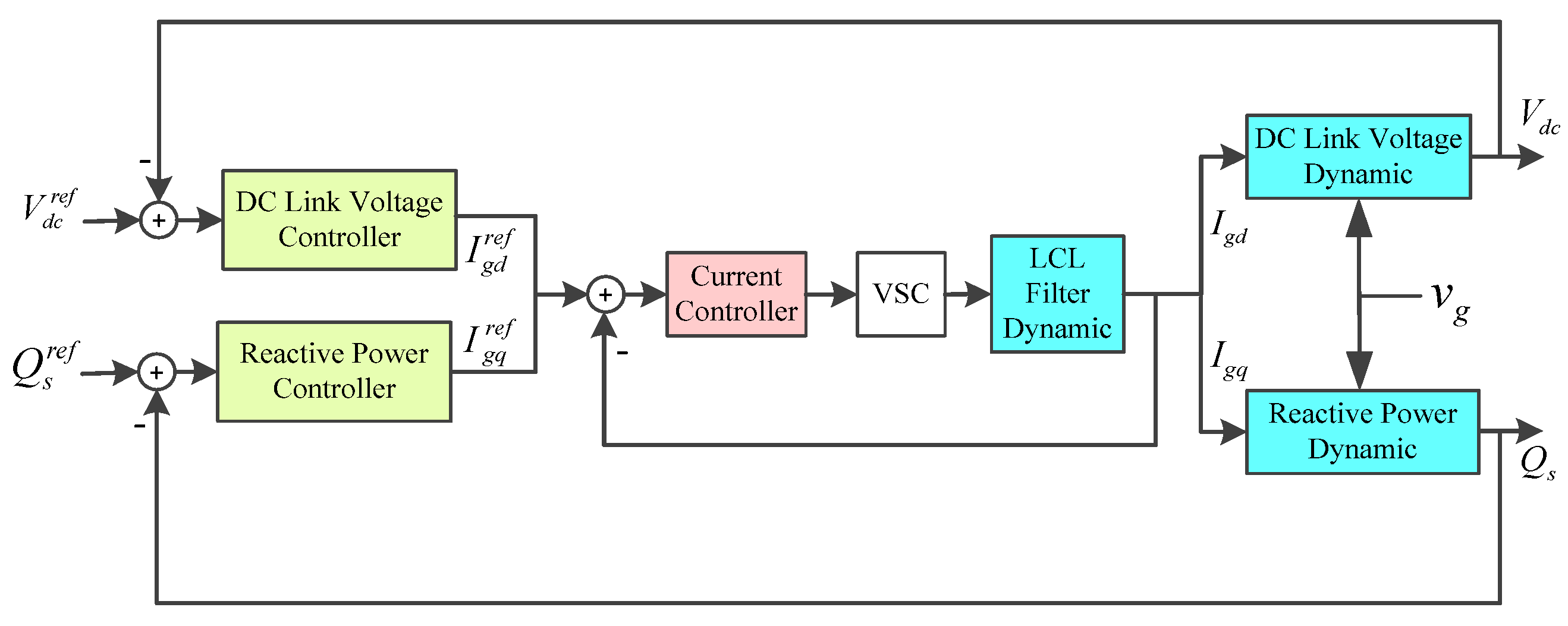
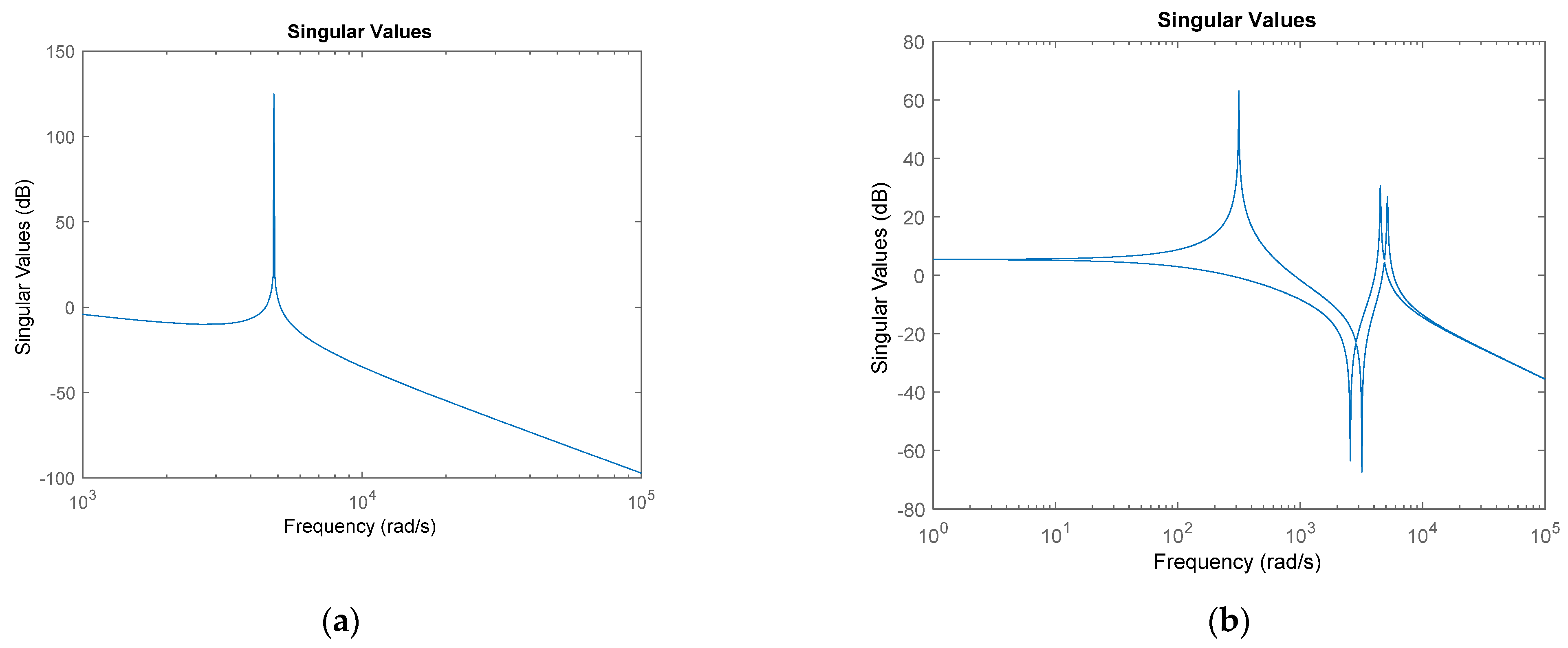
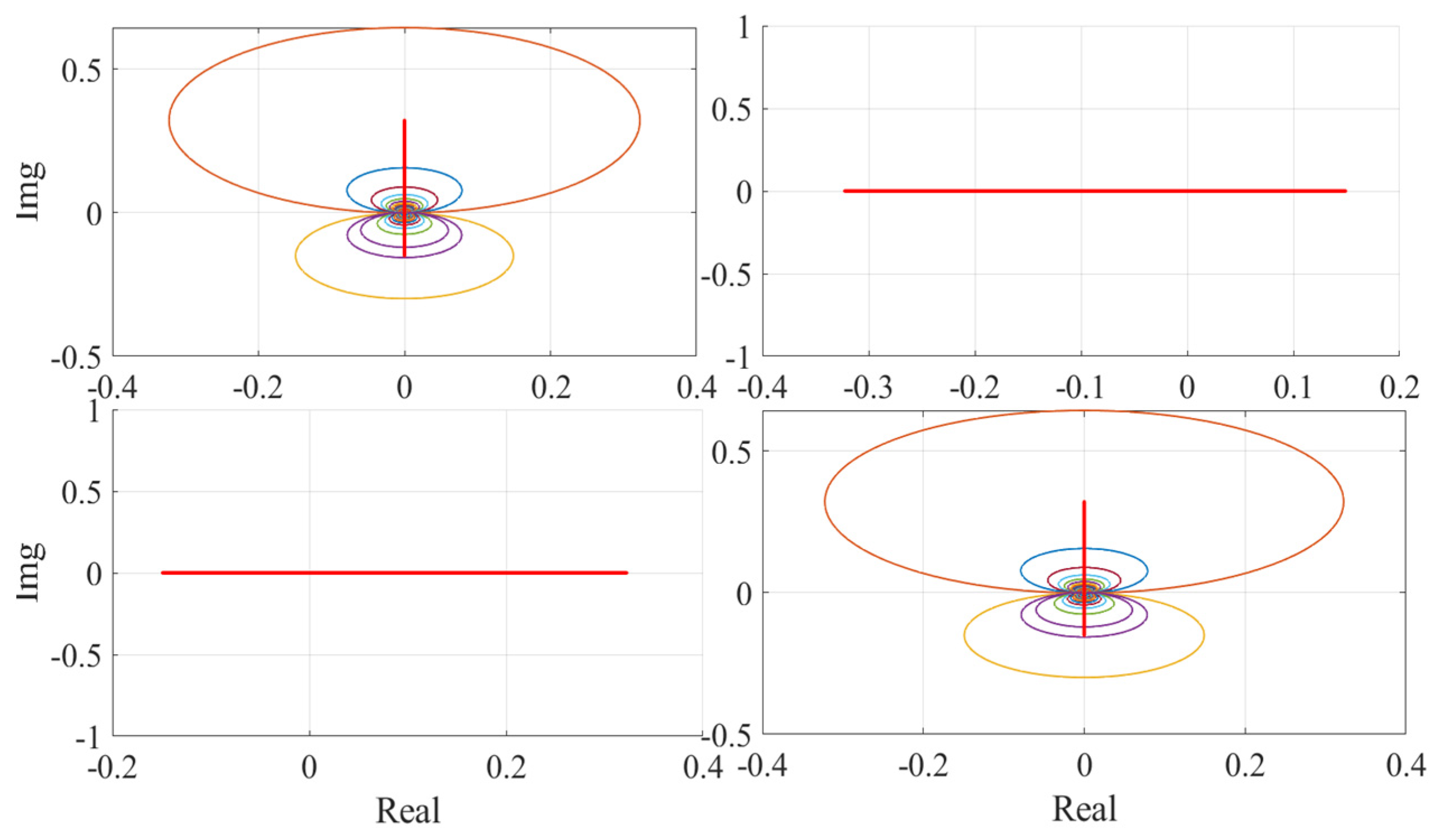
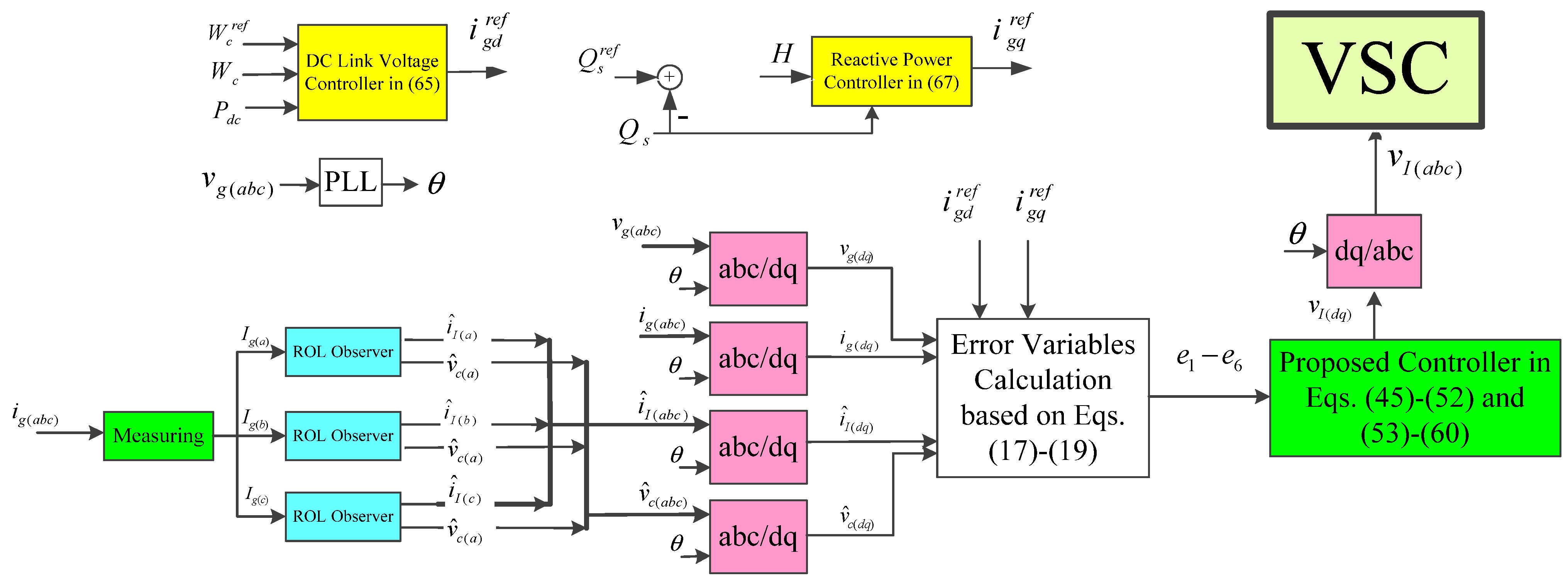
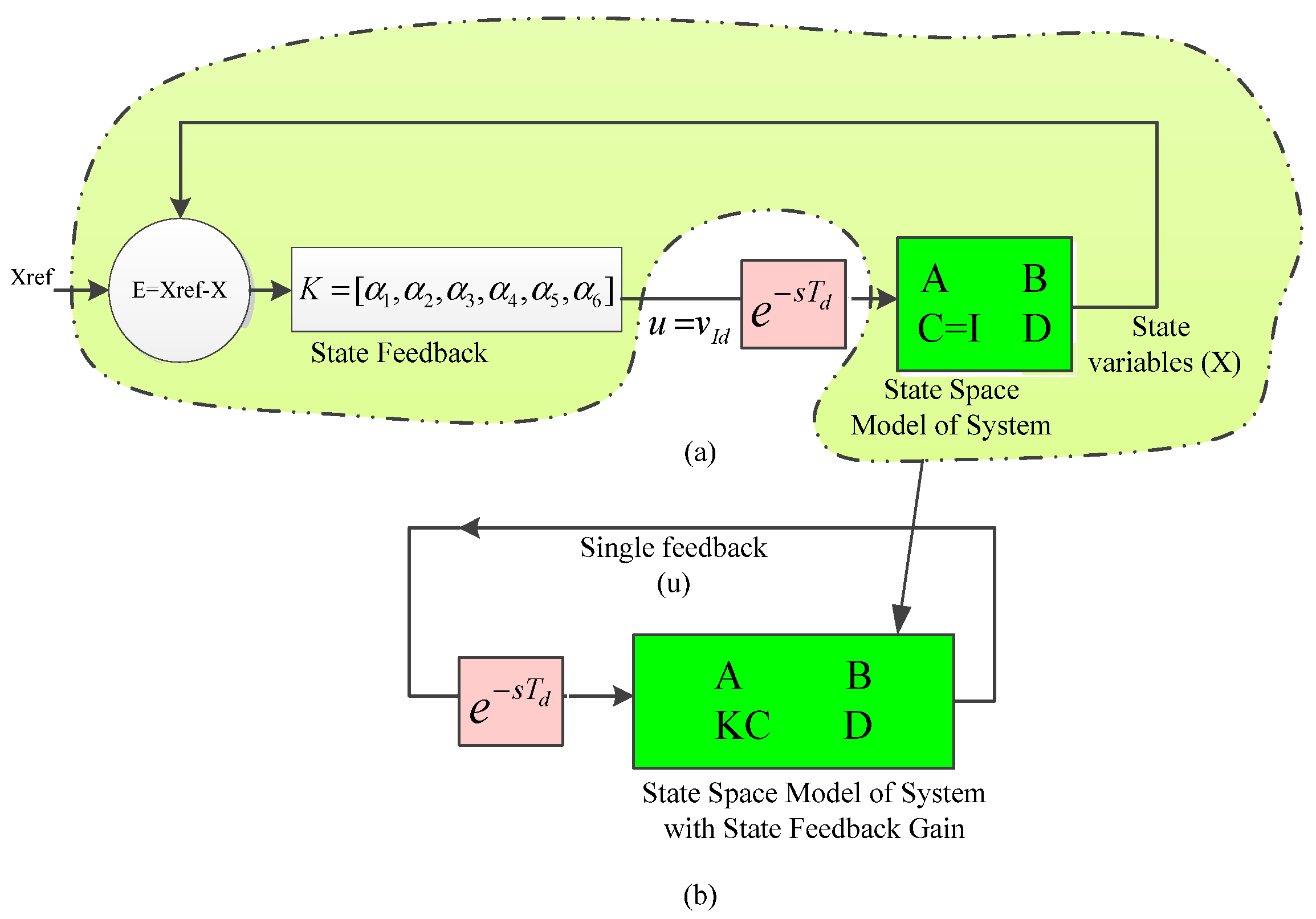
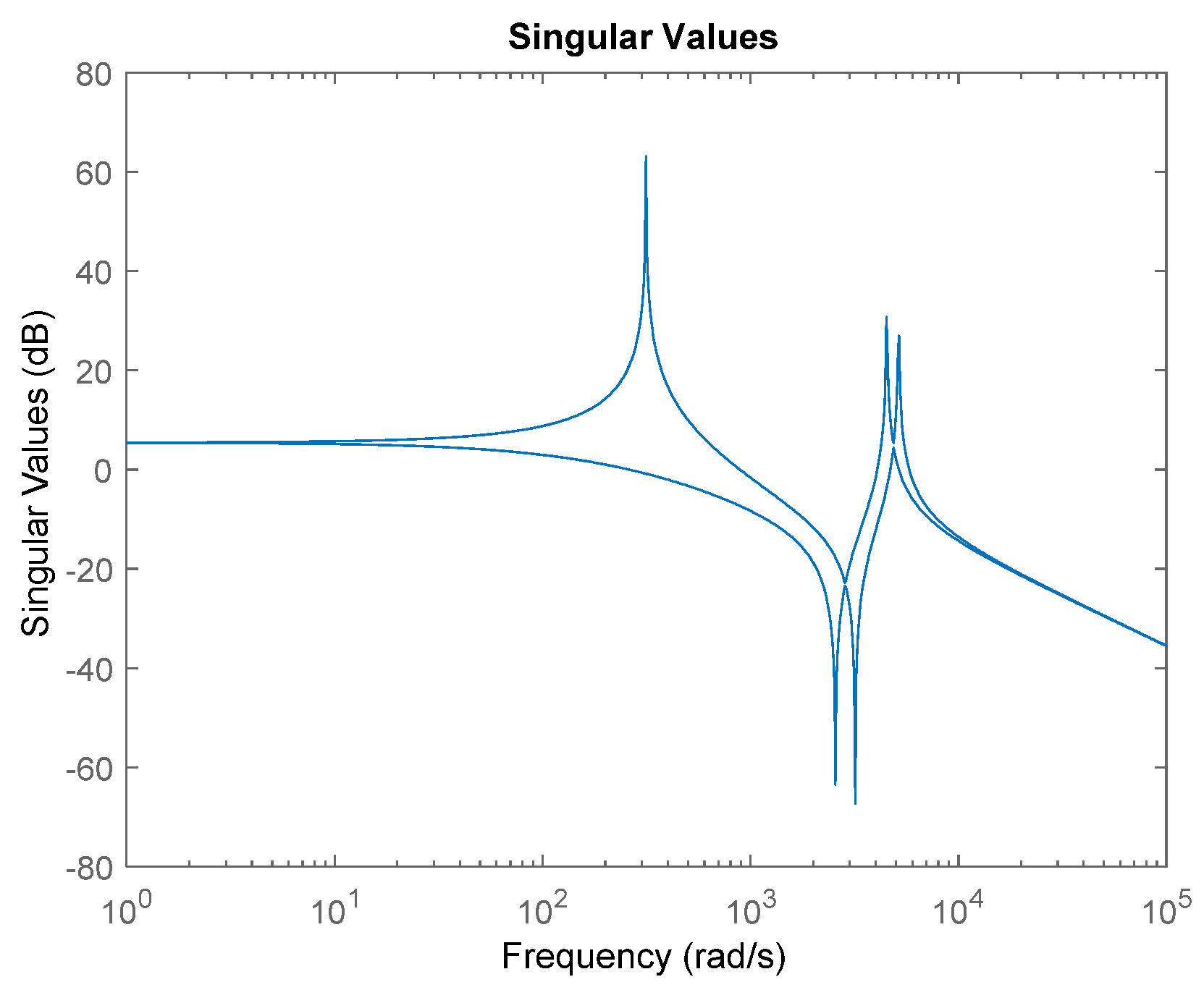
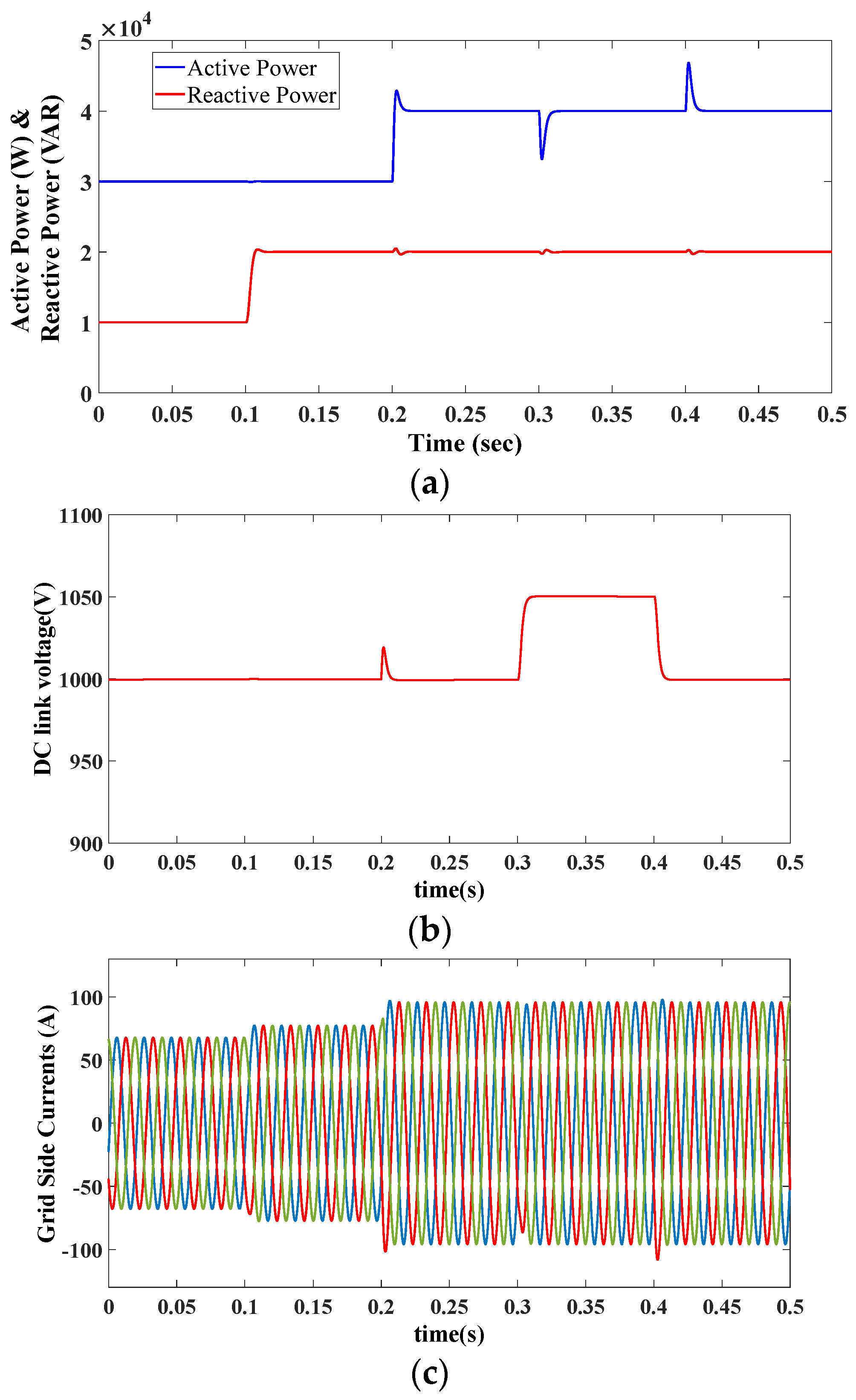
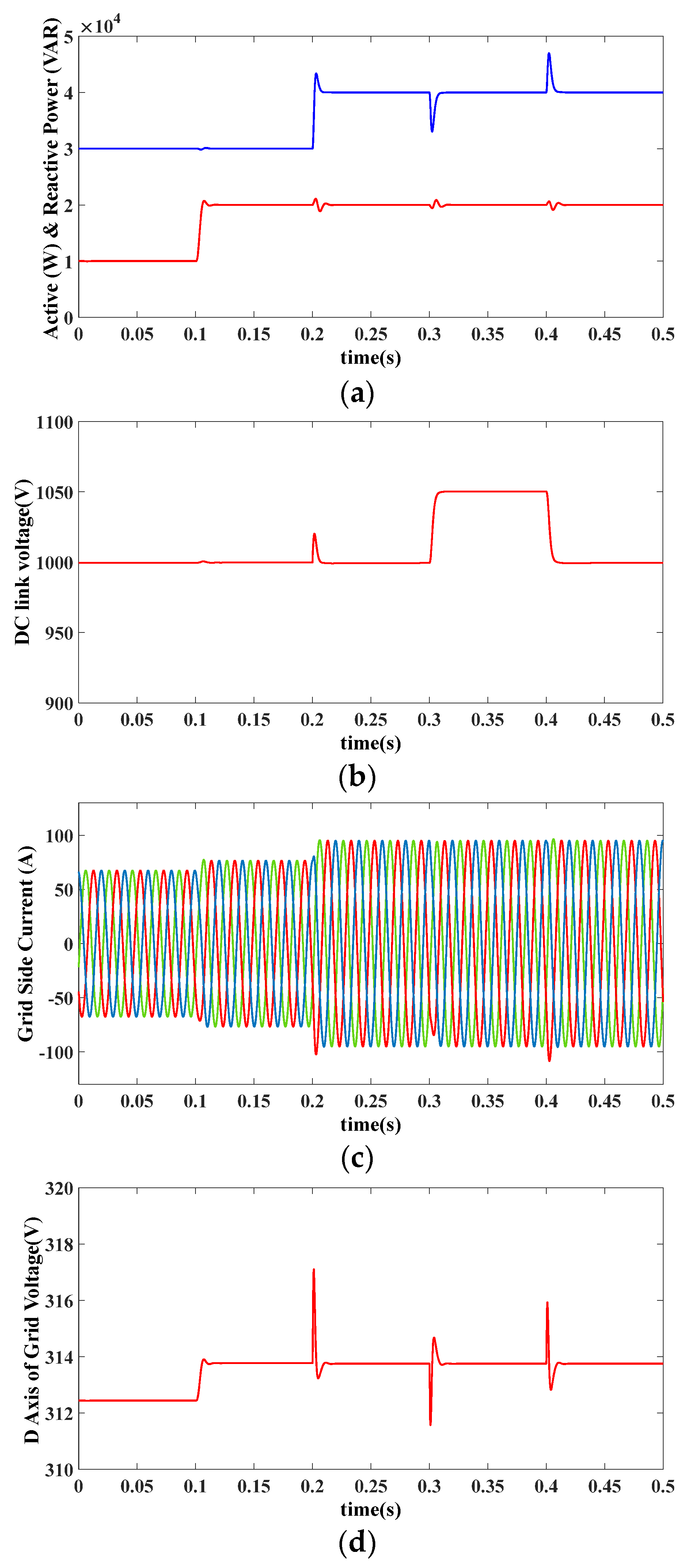
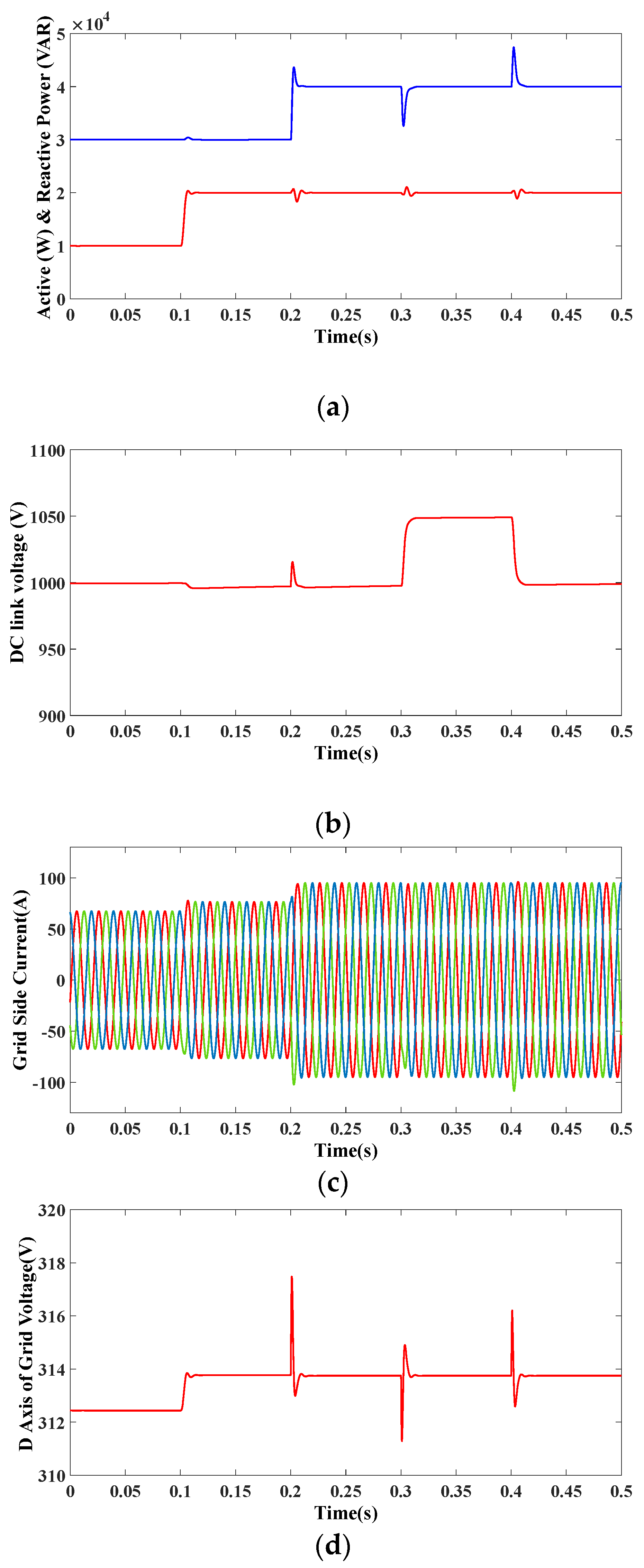
| AD Method | Proposed Method | Single Loop Methods [6,7,8] | Multi Loop Methods (Capacitor or Inverter Currents Are Fed back as Inner Loop) [11,12,13,15,16] | Multi Loop Method (Capacitor Voltages Are Fed back as Inner Loop) [14] | Predictive, Adaptive, and Robust Methods [19,20,21,22,23,24,25,26,27,28] | |
|---|---|---|---|---|---|---|
| Criteria | ||||||
| Stability margin and resonance damping capability | high | low | high | medium | high | |
| Number of sensors (Expect to Vg) | 3 current sensors | 3 current sensors | 6 current sensors | 3 current sensors 3 voltage sensors | 6 current sensor and may be 3 voltage sensors | |
| Decoupled control of active and reactive currents | Completely decoupled | no | no | no | no | |
| Complexity and order of controller | medium | medium | medium or low | medium or low | high | |
| 86 | 140 | ||
| 91 | 168 | ||
| 99 | 214 | ||
| 113 | 259 | ||
| 130 | 351 |
| Parameter | Value | Parameter | Value |
|---|---|---|---|
| Switching frequency ( | 10 kHz | 50 kVA | |
| Computation time | <50 µs | 1.1 mH | |
| Grid frequency | 50 Hz | 0.6 mH | |
| 110 µF | |||
| 770 Hz | |||
| 300 | 500 µF | ||
| 1500 | grid impedance | ||
| Grid voltage | 380 V | 1500 |
Publisher’s Note: MDPI stays neutral with regard to jurisdictional claims in published maps and institutional affiliations. |
© 2021 by the authors. Licensee MDPI, Basel, Switzerland. This article is an open access article distributed under the terms and conditions of the Creative Commons Attribution (CC BY) license (https://creativecommons.org/licenses/by/4.0/).
Share and Cite
Ghasemi, M.A.; Zarei, S.F.; Peyghami, S.; Blaabjerg, F. A Theoretical Concept of Decoupled Current Control Scheme for Grid-Connected Inverter with L-C-L Filter. Appl. Sci. 2021, 11, 6256. https://doi.org/10.3390/app11146256
Ghasemi MA, Zarei SF, Peyghami S, Blaabjerg F. A Theoretical Concept of Decoupled Current Control Scheme for Grid-Connected Inverter with L-C-L Filter. Applied Sciences. 2021; 11(14):6256. https://doi.org/10.3390/app11146256
Chicago/Turabian StyleGhasemi, Mohamad Amin, Seyed Fariborz Zarei, Saeed Peyghami, and Frede Blaabjerg. 2021. "A Theoretical Concept of Decoupled Current Control Scheme for Grid-Connected Inverter with L-C-L Filter" Applied Sciences 11, no. 14: 6256. https://doi.org/10.3390/app11146256
APA StyleGhasemi, M. A., Zarei, S. F., Peyghami, S., & Blaabjerg, F. (2021). A Theoretical Concept of Decoupled Current Control Scheme for Grid-Connected Inverter with L-C-L Filter. Applied Sciences, 11(14), 6256. https://doi.org/10.3390/app11146256








